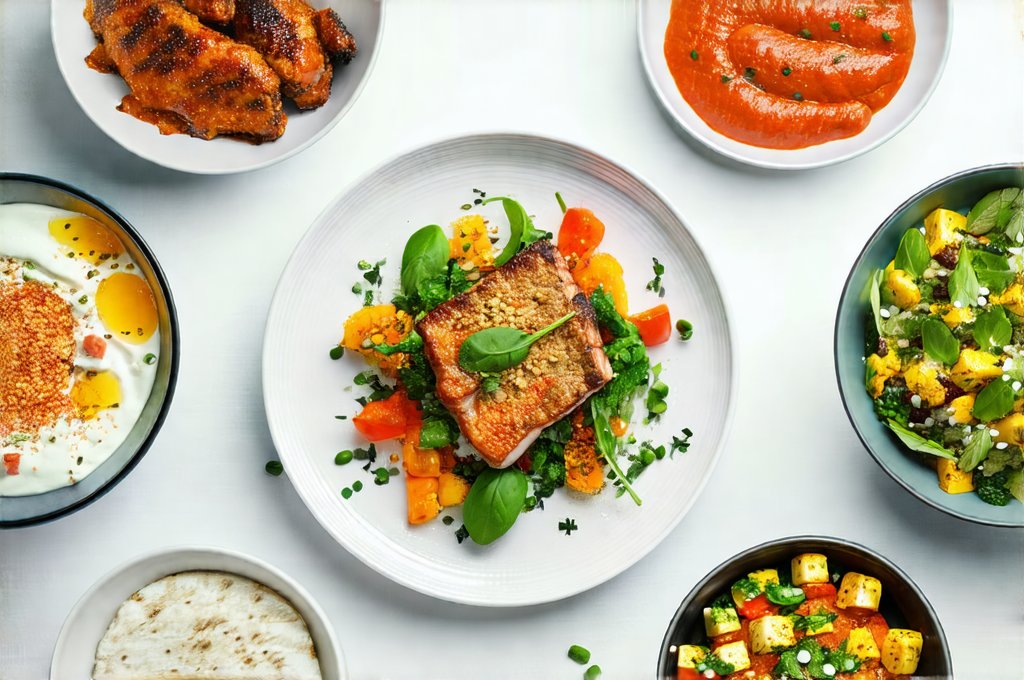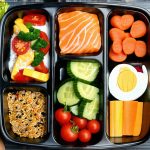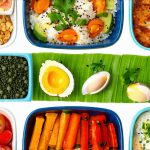Navigating life with Irritable Bowel Syndrome (IBS) or other digestive sensitivities often means making significant adjustments to your diet – and quickly realizing how time-consuming that can be. The Low-FODMAP diet, while incredibly effective for many, isn’t always synonymous with convenience. It demands careful label reading, ingredient awareness, and a level of meal planning that feels daunting amidst busy schedules. But it doesn’t have to be this way. This article is dedicated to proving that nourishing your gut can coexist with a fast-paced lifestyle, offering practical solutions for quick, easy, and delicious Low-FODMAP meals that won’t leave you feeling restricted or overwhelmed.
The key lies in understanding the principles of the diet without getting bogged down by perfectionism. We’ll focus on readily available ingredients, streamlined cooking methods, and meal prep strategies to minimize stress and maximize enjoyment. Forget complicated recipes requiring obscure ingredients – we’re building a foundation for sustainable dietary changes that fit seamlessly into your everyday life. This isn’t about deprivation; it’s about empowering you with the knowledge and tools to feel confident and comfortable in the kitchen, even when time is short. Consider incorporating daily probiotic practices into your routine for added support.
Building Blocks of Quick Low-FODMAP Meals
The beauty of Low-FODMAP cooking lies in its emphasis on whole foods – lean proteins, gluten-free grains, lactose-free dairy alternatives (or plant-based options), and a wide array of vegetables that are naturally low in FODMAPs or can be portioned appropriately. Stocking your pantry with staples like rice, quinoa, oats (check for certified gluten-free), canned tuna/salmon, eggs, firm tofu, and frozen vegetables is the first step towards effortless meal creation. Don’t underestimate the power of spices! Herbs and seasonings are your friends when it comes to adding flavor without triggering symptoms. A well-stocked spice rack can transform a simple dish into something truly satisfying.
Beyond pantry staples, understanding which fresh ingredients are safe and how to prepare them is crucial. For example, many fruits are Low-FODMAP in moderate portions – bananas (ripe but not overripe), blueberries, strawberries, oranges, and kiwi are all good options. Vegetables like carrots, spinach, bell peppers, cucumbers, and zucchini are generally well-tolerated. However, be mindful of portion sizes for vegetables like broccoli, cauliflower, and onions, as they contain higher levels of FODMAPs. Utilizing apps or websites dedicated to Low-FODMAP food lists can prove invaluable when navigating grocery shopping and meal planning. If you’re recovering from illness, preparing simple meals can be especially beneficial during this time.
Finally, embracing the concept of “batch cooking” is a game changer. Spending a few hours on the weekend preparing ingredients – chopping vegetables, cooking grains, roasting proteins – will save you countless minutes during the week. Pre-portioned snacks and pre-made meals can be lifesavers when unexpected hunger strikes or time constraints arise.
Streamlined Meal Ideas for Busy Days
Let’s move beyond theory and into practical application. Here are a few quick meal ideas that utilize the building blocks we’ve discussed:
- Tuna & Cucumber Salad with Rice Cakes: Combine canned tuna (in water, drained), diced cucumber, lactose-free mayonnaise or olive oil, and a sprinkle of dill. Serve with gluten-free rice cakes for a light and satisfying lunch.
- Egg Scramble with Spinach & Bell Peppers: A classic breakfast or quick dinner option. Sauté spinach and bell peppers in olive oil, then add scrambled eggs seasoned with salt and pepper.
- Salmon with Roasted Carrots & Quinoa: Roast salmon fillets alongside chopped carrots tossed in olive oil and herbs. Serve with cooked quinoa for a complete meal.
- Tofu Stir-Fry with Low-FODMAP Vegetables: Use firm tofu, stir-fried with low-FODMAP vegetables like carrots, bell peppers, and spinach, seasoned with gluten-free soy sauce or tamari and ginger.
These are just starting points – feel free to customize them based on your preferences and dietary needs. The goal is to create meals that are both gut-friendly and convenient, minimizing stress and maximizing enjoyment. Don’t be afraid to experiment with different flavor combinations and ingredients until you find what works best for you. Understanding gut-brain interactions can help you choose foods that promote both physical and mental well-being.
Quick Breakfast Solutions
Mornings can often feel chaotic, leaving little time for elaborate breakfast preparations. Fortunately, there are several quick Low-FODMAP options that require minimal effort:
- Oatmeal (Certified Gluten-Free) with Blueberries & Lactose-Free Milk: A comforting and nutritious start to the day. Use lactose-free milk or a plant-based alternative and top with a handful of blueberries. Avoid adding honey or maple syrup in large quantities, as these can be high in fructose.
- Smoothie with Banana, Spinach, & Almond Milk: Blend a ripe (but not overripe) banana, a handful of spinach, almond milk, and a scoop of protein powder (ensure it’s Low-FODMAP). This is an excellent option for those on the go.
- Eggs with Gluten-Free Toast: A simple yet satisfying breakfast. Scramble or fry eggs and serve with gluten-free toast topped with avocado (in moderation) or lactose-free butter.
Preparing overnight oats the night before can further streamline your morning routine. Combine certified gluten-free oats, lactose-free milk, chia seeds, and a touch of cinnamon in a jar, then refrigerate overnight. In the morning, simply add toppings like blueberries or sliced almonds. For a calm start to the day, consider foundational morning meals.
Lunchtime Strategies for Busy Professionals
When you’re juggling work commitments, finding time to prepare lunch can be challenging. Here are some strategies to make lunchtime Low-FODMAP friendly:
- Leftovers from Dinner: The simplest solution! Double your dinner portion the night before and pack the leftovers for lunch.
- Salad Jars: Layer salad ingredients in a jar – dressing at the bottom, followed by hard vegetables (carrots, cucumbers), then protein (grilled chicken or tuna), and finally leafy greens. This prevents wilting and ensures a fresh, convenient lunch.
- Pre-Portioned Snacks: Keep a stash of Low-FODMAP snacks at your desk – rice cakes with avocado, lactose-free yogurt, a handful of almonds, or sliced carrots with hummus.
Utilizing meal prep services that cater to dietary restrictions can also be a valuable option for busy individuals who lack the time or energy to cook. Just ensure they clearly identify ingredients and adhere to Low-FODMAP guidelines.
Snacking Smart: Avoiding Gut Distress Between Meals
Snacking is often necessary to maintain energy levels throughout the day, but it’s important to choose wisely when following a Low-FODMAP diet. Avoid high-FODMAP snacks like granola bars, fruit snacks, and many processed foods. Instead, opt for these gut-friendly options:
- Rice Cakes with Peanut Butter (Natural): A satisfying and portable snack. Choose natural peanut butter without added sugars or oils.
- Lactose-Free Yogurt with Blueberries: Provides protein and probiotics to support gut health.
- Small Portion of Almonds or Walnuts: Nuts are a great source of healthy fats and fiber. However, portion control is key, as excessive nut consumption can sometimes trigger symptoms.
- Carrot Sticks with Hummus (Low-FODMAP): A crunchy and flavorful snack that’s rich in nutrients.
Planning your snacks ahead of time will help you avoid impulsive choices that could lead to digestive discomfort. Keep a supply of Low-FODMAP snacks readily available at home, work, or in your car to prevent hunger pangs from derailing your dietary efforts. If you experience occasional issues, explore quick fixes for digestive discomfort.
Ultimately, Quick Low-FODMAP meals aren’t about rigid restriction; they’re about empowering you to take control of your digestive health without sacrificing convenience or enjoyment. By focusing on simple ingredients, streamlined cooking methods, and proactive meal planning, you can create a sustainable lifestyle that supports both your gut and your busy schedule. If dealing with flare-ups, remember best practices for preparing meals.


















